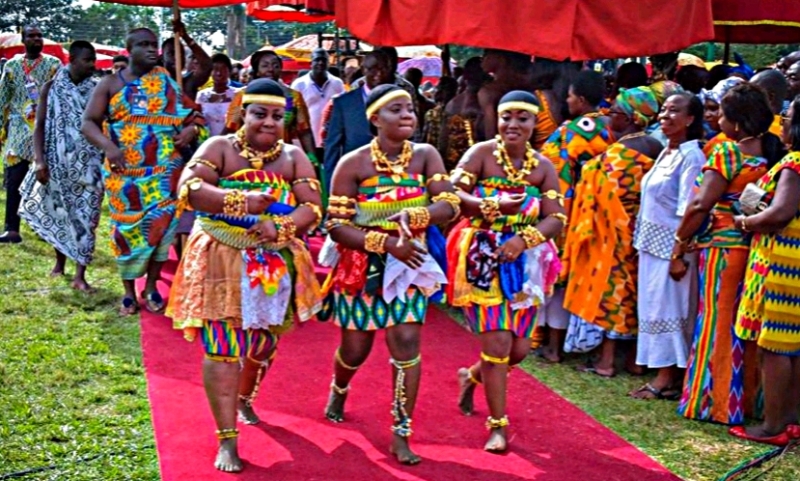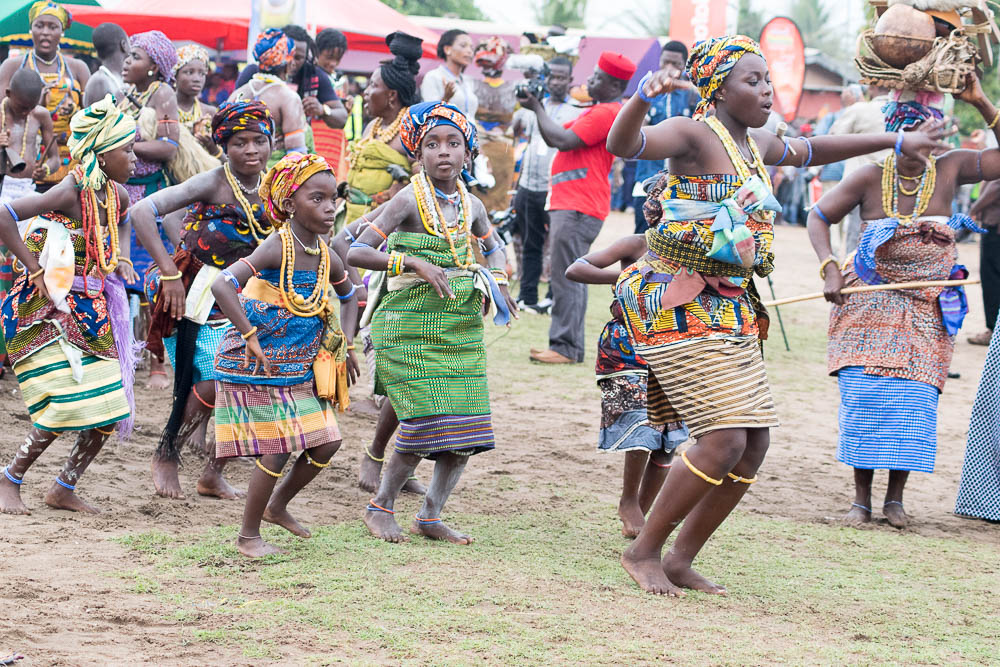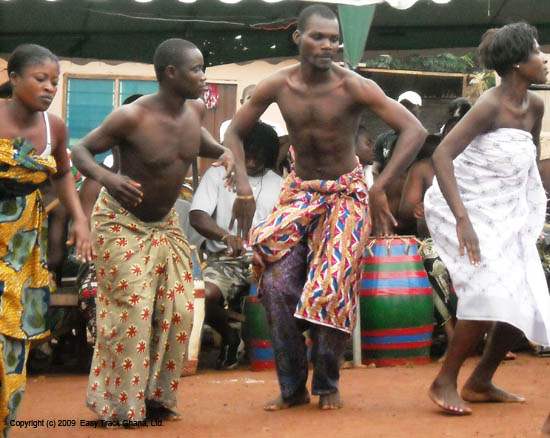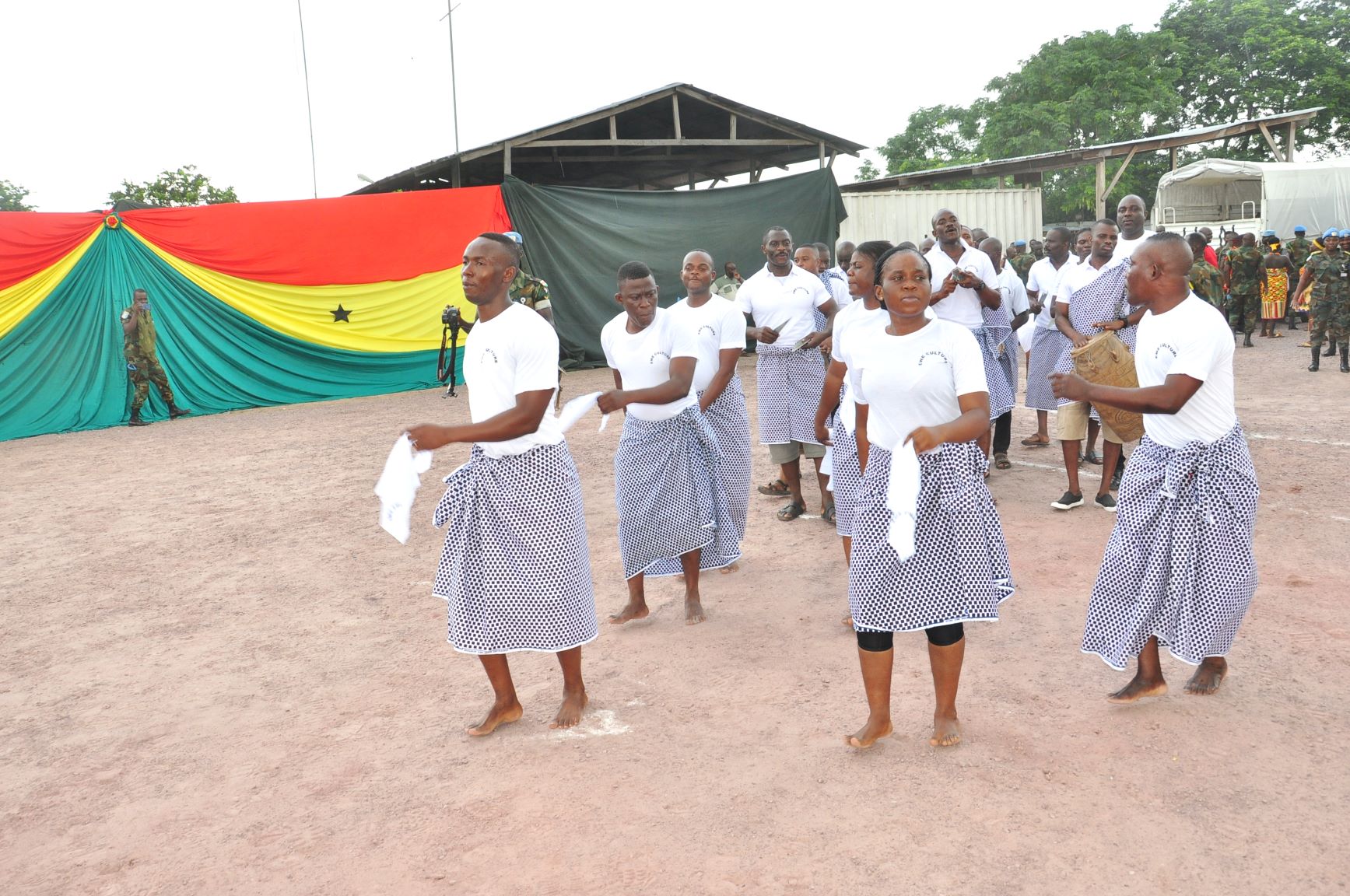Ghana Month: Historical meanings of traditional dances
It’s another beautiful and exciting day to know more about Ghana’s culture.
Do you love Ghana’s traditional dances and how often do you partake in these dancing styles at any traditional events?
Today’s special edition of the Ghana Month Diary by The Ghana Report focuses on the meaning embedded in the traditional dances among the five major ethnic groups in Ghana and why they are still cherished among its people.
At festivals, funerals, or any ceremonial occasion, chiefs, queen mothers, cultural groups, and others are always seen dancing flamboyantly and these dances have meanings and we will look at those meanings today.
The Akan ethnic group has a dance called ‘Adowa’, the Ga-Dangbe people are noted for dancing ‘Kpanlogo’, the Ewe tribe is for the ‘Agbadza’ or ‘Borborbor’, the Guan people are for the ‘Kpana’ or ‘Kpanaliumni’, and the Mole Dangbani people dance ‘Kambon-waa’.
Now, let’s see the meanings attached to these dances in Ghana.
- ‘Adowa’- The Akan Ethnic Group
The ‘Adowa’ dance is the primary traditional dance of the Akan ethnic group found in Ghana. This dance can be performed by both males and females at any social gathering.
The movement of the dance is said to have originated from the movement of the antelope which the Akan people refer to it as ‘Adowa’.
The ‘Adowa’ dance is being performed at funerals, festivals, the enstoolment of chiefs or queen mothers, the inauguration of new projects in communities and other important social gatherings.
The Akan ethnic group derived their ‘Adowa’ dance from a story they believed existed in the past.
The Asante Kingdom narrated the story as “at the sick bed of a Queen Mother by the name Abrewa Tutuwa, the gods directed the people to slaughter an antelope and use its blood as pacification for the restoration of the health of the Queen Mother. So some men were sent to the forest”.
“When the warlords came back from the forest with the live antelope, people around saw to their surprise, the antelope jumping about in strange movements. The people then attempted to imitate the movements of the animal in a dance in which they rejoiced at the restoration of the Queen Mother’s health”.
History has it that, the first group of people among the Akans to perform the ‘Adowa’ dance is the Asafo warriors’ group.
The ‘Adowa’ dance is often performed in colourful Kente apparel with ‘Ahenema’, traditional slippers worn on special occasions.
The dance can also be performed barefooted and that can be seen especially among females.
Below are some people performing the ‘Adowa’ dance



- ‘Kpanlogo’ – The Ga-Adangbe Ethnic Group
The ‘Kpanlogo’ dance is performed by the Ga-Adangbe tribe in Ghana.
The dance can be performed by males and females at royal or any other social gathering.
Performers of this dance often put on white cloth known as ‘Klala’ in the Ga language, and decorate their bodies with white clay or bentonite clay known as ‘Ayilo’.
They also put beads around their neck, ankles, elbows, and wrists.
According to the Ga traditional council, the dance evolved somewhere around 1960, not long ago after Ghana gained Independence in 1957.
The music genre for performing this traditional dance emerged from Kolomashie, Gome, and Oge.
The dance was initiated by young Ga people mainly for entertainment in those days.
The dance was always performed during storytelling moments in the olden days.
It is said that the original name for ‘Kpanlogo’ was ‘Gbajo’ which means storytelling.
There is a folklore story about a Ga chief having three daughters and it was a time that one of the children had to get married.
This chief requested that the man who will marry any of the daughters will have to mention all the names of his three daughters. Their names were Kpanlogo, Alogodza, and Mma-mma.
These names were later used to compose a Kolomashie song with the lyrics ‘A B C D, E F G H, I J K L, M N O P’ ajo Kpanlogo, Kpanlogo, alogo, alogo, Mma-mma.
This song is known by every typical Ga-Adangbe person.
Below are some Ga-Adangbe people performing the Kpanlogo dance


- ‘Agbadza’ or ‘Borborbor’ – The Ewe Ethnic Group
The ‘Agbadza’ dance is mainly for the Ewe people in the Volta Region of Ga.
The dance is believed to be a war dance as it symbolizes how the Ewe people fled from King Agokoli in Dahomey located in Benin to their present home Ghana.
King Agokoli was believed to be a wicked King whose people never enjoyed freedom until their migration to Ghana.
The Ewe tradition believes that the ‘Agbadza’ dance belongs to the Bekor movement form.
The dance is performed backward which historically depicts how the Ewe people left Dahomey for a different territory backward till they had freedom for themselves.
An oral tradition among the Ewe group says the people under the refuse of King Agokoli continued to pour water on the clay walls of their compound. When the clay wall was weakened, they pulled it down, turned around, and marched out of the compound backward and they did that to convince others that they are entering the compound and not escaping from Dahomey.
The story continued that like the star that served as a guide to the wise men in the Bible looking for Jesus Christ, there was a bird that hovered around the Ewe people and the bird directed the Ewe people to a peaceful land called Ghana today.
A bird has wings, hence, the Ewe people always open their hands like that of a bird when they are performing the ‘Agbadza’ dance.
The dance can be performed by both males and females at festivals, the enstoolment of chiefs and queens in the Volta Region, and any other social event.
Below are some Ewe people performing the ‘Agbadza’ dance



Another dance well-known among the Ewe people is the ‘Borborbor’.
It is believed that one former police officer by the name, of Francis Nuatro who hailed from Kpando was the first person to start a musical genre called “Borborbor”.
The dance is performed by using white handkerchiefs.
The dance is performed at festivals, funerals, the installation of new chiefs, and other important social gatherings.

Group of people performing Borborbor dance
- ‘Kpana or Kpanaliumni’ – The Guan Ethnic Group
The ‘Kpana or Kpanaliumni’ dance is performed by the Guan people in Ghana.
The Guans are the Nkonya, Anum, Larteh, Nawuri, Ntsumburu, and others in that enclave.
The ‘Kpana or Kpanaliumni’ dance is believed to be a hunter dance that is performed by any hunter who kills any animal in the bush or forest such as a leopard, hartebeest, or buffalo.
The dance is also performed during funerals with the drummers wearing their talismans.
People depicting the ‘Kpana or Kpanaliumni’ dancing moves


- ‘Kambon-waa or Damba’ Dance – Mole Dagbani Ethnic Group
The Mole Dagbani group, made of different sub-groups like the Mamprugu, Nanumba, Mossi, and others have different dancing styles in which ‘Kambon-waa’ is a key component.
The ‘Kambon-waa’ which literally means warrior’s dance is performed by members of the Dagbamba warrior lineage.
According to history, the ‘Kambon-waa’ refers to the performance events of the Zamboni, or warriors, of the traditional kingdom of Dagbon, located in present-day Ghana and Togo.
Another dance among the Mole-Dagbani is the Damba dance which is performed during the Damba festival to celebrate the birth of Prophet Mohammed, Peace and Blessings of Allah be Upon Him.
The Damba dance has its origin in the celebration of the birth of Prophet Mohammed. This means that the dance is for celebration or a joyful moment.
The ‘Kambon-waa’ or the ‘Damba’ dances are often performed at festivals, funerals, and the installation of a new chief in the Northern region, especially among the Dagbon people.
The dances can also be performed at any social gathering.
The performers always put on smocks to dance elegantly for the audience.



There are several dances among other tribes in Ghana that are also well recognized on any occasion.
Get involved and participate in any of the dances mentioned and even those that have not been discussed in this episode and you will definitely love to do these dances at all times.




The dance I like most is Ampatampa. I really appreciate your creative works. Keep it up.